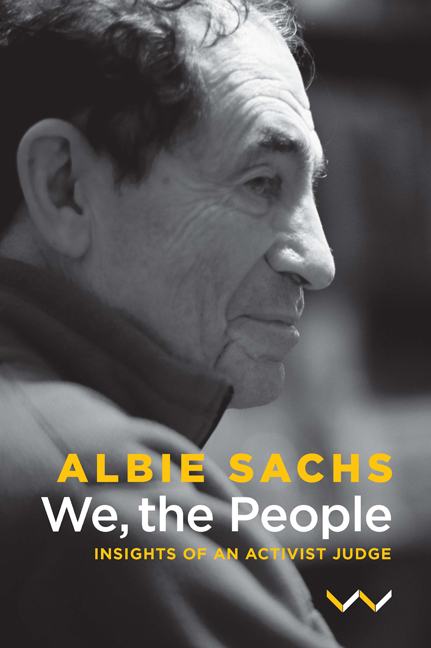Book contents
- Frontmatter
- Acknowledgements
- Miscellaneous Frontmatter
- Contents
- Figures
- Introduction
- 1 In the Beginning
- 2 Hope and Caution in Exile
- 3 We Have to Mistrust Ourselves
- 4 Inventing A Constitution
- 5 With Clean Hands and Without Secrets
- 6 Reconciling the Past and the Future
- 7 Living Constitutional Law and Ubuntu
- 8 More than Crumbs from the Table: Enforcing Social and Economic Rights
- 9 Struggle Continues
- 10 Are the Beautiful People Born?
- Cases Cited
- Sources
- Index
7 - Living Constitutional Law and Ubuntu
Published online by Cambridge University Press: 21 April 2018
- Frontmatter
- Acknowledgements
- Miscellaneous Frontmatter
- Contents
- Figures
- Introduction
- 1 In the Beginning
- 2 Hope and Caution in Exile
- 3 We Have to Mistrust Ourselves
- 4 Inventing A Constitution
- 5 With Clean Hands and Without Secrets
- 6 Reconciling the Past and the Future
- 7 Living Constitutional Law and Ubuntu
- 8 More than Crumbs from the Table: Enforcing Social and Economic Rights
- 9 Struggle Continues
- 10 Are the Beautiful People Born?
- Cases Cited
- Sources
- Index
Summary
A number of men surround a person, drag his arm behind his back, march him to a platform, put a rope around his neck, pull away a trapdoor. The trapdoor opens, the person goes down, and the rope strangles him to death. A number of people surround a person without his consent, move him to a table, tie him to the table, inject him with poison, and he dies. A number of men surround a person, against his will – he is not fighting or resisting. They put him against a post, pick up rifles, and shoot him in the heart. This would be murder, cold-blooded murder. Except if done by the state. The real question, I believe, before this Court is: ‘Is the state entitled to kill its citizens in cold blood?’
That was the question we had to face in South Africa when the new Constitutional Court was inaugurated in 1995. Our country had known an enormous amount of violence and was still plagued with high levels of crime. It was also a country with a new Constitution, a new president, and new values. The very first case which the Constitutional Court heard was whether or not capital punishment was consistent with our new constitutional order. Nelson Mandela, our first democratically chosen president, had no doubt about where he stood. He sent an advocate who had defended him when he himself had been on trial for his life, to urge the Court to abolish capital punishment. For their part, the state law officers argued resolutely in favour of retaining it. Four hundred people were on death row – there had been a moratorium on capital punishment – and they wanted to know whether the rope would be put round their necks. The cost-efficient gallows in Pretoria would have allowed for six of them to be hanged simultaneously. So their lives depended on our decision. This was not simulated, it was a real court experience.
In making up our minds we had to decide what kind of a country ours would be; what we aspired to be like as a nation; what the core values of our society were; what it meant to be a human being in South Africa.
- Type
- Chapter
- Information
- We, the PeopleInsights of an Activist Judge, pp. 145 - 198Publisher: Wits University PressPrint publication year: 2016

